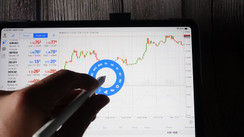Scalping is a short-term style of trading the markets with the aim to make small and quick profits multiple times in a day. It’s fast-paced, thrilling and can be hugely rewarding for those who know how to do it right.
Scalping tends to be chaotic and stressful, however, hence most traders choose to scalp the market for a few hours per day only, usually during the peak hours of trading.
It’s the most short-term trading style of all with trades usually being held for a few seconds only and up to a few minutes, tops. Forex scalpers normally look to make a profit as quickly as possible, usually in the amount of 10 – 20 pips on each trade and will generally use stops of the same size.
In the past, scalping was only practiced by big the players such as market makers as a way to capitalize on the spread difference, but now, the term scalping is mostly used to describe retail Forex traders who are looking to take quick profits out of the currency market.
Important aspects for successful Forex Scalping
Scalping is most suitable for a highly liquid market, such as Forex, hence it’s no wonder that many Forex traders chose this trading style as their preferred one.
Go for an ECN broker
If you intend to scalp the Forex market profitably, then choosing a good ECN broker is one of the first and most important things to do. Trading costs and quality of execution can be just as important as the quality of the trading system to a scalper. Since the usual size of the spread can be 20 – 30 % of the usual stop loss and profit target to a scalper, it not difficult to see how trading costs make a huge difference for a scalping strategy.
Purple Trading (www.purple-trading.com) is a true ECN broker that offers super tight spreads and super fast execution on orders. They provide direct market access to the real liquidly providers and to the real interbank market – making them a suitable option for scalping Forex.
Have a proven trading strategy
A trading system with a proven track record is definitely another of the crucial necessary things to be a profitable Forex scalper. As with other trading styles, different systems based on different indicators exist or can be created. Short-term traders generally find that leading indicators such as support and resistance work very well. To get a sense of direction in the market scalpers will usually choose to plot some kind of a trending indicator on their charts, most commonly moving averages.
Stay fully focused during trading hours
Scalping requires uninterrupted attention for the time that you are trading as prices are changing rapidly by the tick. Scalping is more of an art than a science and a lot of good trades come down to having a good feel for the market. Scalpers usually use the very short-term charts on the trading platform such as the 5 minute, 1 minute or even tick charts.
Stick to the major and most liquid pairs
Just as it’s important to get tight spreads and high-speed trade execution, it’s also important to stick to trading the major and most liquid pairs. That is pairs like EURUSD, GBPUSD, USDJPY, or perhaps EURJPY will good choices to employ a scalping strategy on, but trying to scalp the market on a pair like USDTRY for example, will be a bad choice.
No matter which broker you choose, cross and exotic Fx pairs will have much higher spreads than the majors and hence are unsuitable for scalping strategies.
Choose the time for trading wisely
The busiest times of the day are generally the best for scalping. Although there are some strategies that are designed specifically for low liquidity environments such as the Asian session, most scalpers will trade either during the London or the New York sessions. The overlap between London and New York is also a popular time for scalpers as it is the actual busiest time of the day in the Forex market.
Most importantly, keep in mind that scalping strategies may produce different results when used at different times in the day. So, if a strategy was designed to be traded at the London open it will probably not produce great results during the Asian session.
Pros of scalping
You can achieve a higher win to loss ratio with a scalping strategy than you would with a longer-term trading strategy. There are scalping systems that yield 80 – 90 percent winning trades, while a good swing trading strategy would have around 50 – 60 percent winners.
Another benefit of scalping is that you won’t keep open trades at night so you can sleep calmly. While a stop loss is a great way to protect your capital, longer-term traders will always have their open positions somewhere in the back of their minds, even at night. Scalpers never have to deal with that kind of pressure.
Due to the small size of their stop-loss orders, it’s normally possible to start scalping with a smaller account and use higher leverage. This can potentially offer much higher returns over the same period of time compared to other trading styles.
Cons of Scalping
The performance of scalping trading systems can change frequently and hence usually need regular updates.
Another problem that you’ll have to deal if you are scalping the Forex market is the costs for executing your trades. Since Forex traders pay spreads and/or commissions on each trade they take, it automatically follows that the more trades you take the more money you will share with the broker. This is something you will have to be well-prepared for in advance because spreads can undermine the bottom line of a scalping strategy to the point where it’s no longer profitable.
Another disadvantage of scalping is that it can be quite intensive and exhausting. Those 2, 3 or 4 hours that you are in front of the screens will need your full attention. Most people, as a result, feel tired after those several hours of intense focus.
Is scalping right for you?
Scalping is an attractive style of trading for adrenaline seekers and people who like to see results fast. In contrast, people who are slower decision makers and who are interested in the depth of things will probably prefer some of the longer-term trading styles.
If you have the time and don’t mind spending several hours per day looking at charts then scalping can be suitable for you. But, if for whatever reason, you are unable to give it your full attention for a few hours per day, then you may want to consider other longer-term trading styles, such as swing trading or day-trading.





